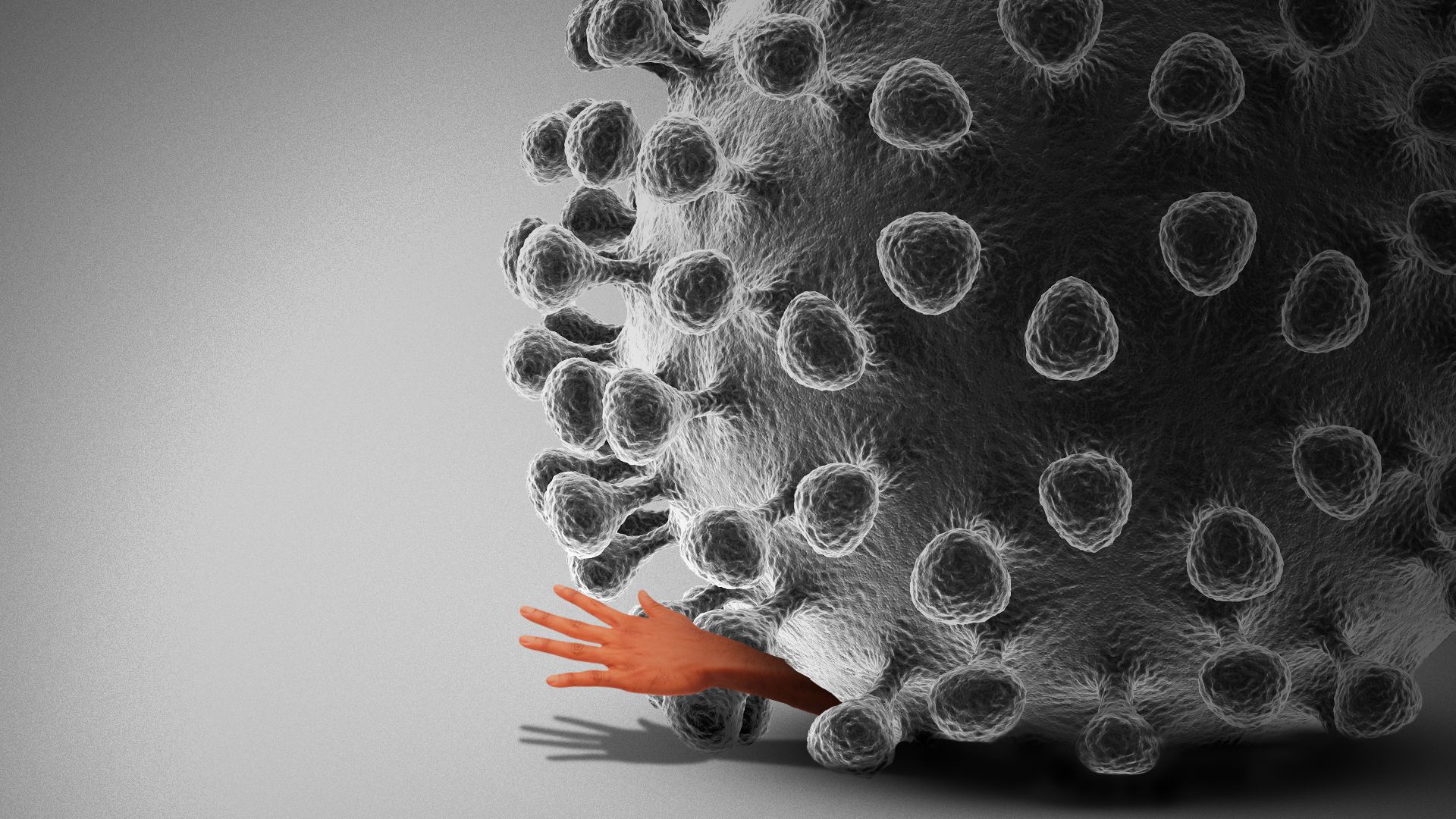Despite the crop of vaccines, the healthcare industry expects to fight coronavirus for years
22 January 2021 (Chania, Greece) – When I began to read and research and write about COVID, the challenge was overwhelming. Although I have a bit of a science background (a second degree in physics, a life long passion to read almost everything about all elements of science and medicine), I was venturing onto ground where I had no guarantee of safety or academic legitimacy. So it was not my intention to pass myself off as a scholar, nor as someone of dazzling erudition. It has been enough for me to act as a messenger for those who do have knowledge, and offer my own reflections on that knowledge. No doubt the old dream that once motivated Condorcet, Diderot, or D’Alembert has become unrealizable – the dream of holding the basic intelligibility of the world in one’s hand, of putting together the fragments of the shattered mirror in which we never tire of seeking the image of our humanity. But we try.
And I had help. Although retired, I kept a small research and media staff with me plus a few freelancers as needed. We jumped into “everything coronavirus”. We’ve produced 100+ articles and client memos and Linkedin posts (many of these pieces are freely available here).
Yes, a tsunami of material to read. With a high level of complexity. The unprecedented uncertainty amid the coronavirus pandemic … especially the data … has decimated our carefully laid plans and unsettled our minds at equal pace. This coronavirus, with its health, social, scientific and economic impacts, has made the content production engine of this world go into overdrive, leaving most of us struggling within an infodemic. All of the world’s complex/interlocking dynamics exposed a basic absurdity at the heart of our global society. It is not a system aimed at satisfying our desires and needs, at providing humans with greater amounts of physical utility. It is instead governed by impersonal pressures to turn goods into value, to constantly make, sell, buy, and consume commodities in an endless spiral and ignoring the effect of that system on the “normal human”.
The feeling that civilization might end was only discussed amongst a few. And it was probably way too extreme, even for a cynic like me. My American and European cohorts had a blind assumption of relative stability. Shit was feeling a bit crazy in the beginning, but that fear of not knowing what tomorrow could look like had really not been there, at least in my lifetime. And our daily routines had added elements. I bleached my incoming snail mail, I wore (still wear) surgical gloves at the grocery store, I am ever vigilant over my space between fellow humans (and walking through their spaces) worried about transmission via “droplet spread”.
But of late I have become more concerned. Not about civilisation’s immediate end (that will come all in good time) but the long-term seriousness of the disease.
This week I have done three Zoom calls: one by the Johns Hopkins Coronavirus Resource Center (which seems to be the “go to” source for much of the world); the annual JPMorgan Healthcare Conference which was pretty much “all COVID”; and the quarterly Techonomy Healthcare Center event. There is also a lead piece in this weekend’s Financial Times. The primary subjects were: the growing mutant strains of COVID (two of which may have higher degrees of mortality); the growing belief by many in the healthcare industry that we need to prepare for “an enduring war on COVID”; the need for new vaccines; and the specific issues creating long-COVID (one session was devoted to the fact that doctors still do not fully understand the increase in long term heart damage to the young).
At the JPMorgan event Tom Polen, chief executive of Becton Dickinson (the New Jersey-based manufacturer of syringes and tests) said … and this was widely quoted in the press …
“We do believe more so than we did, let’s say four to six months ago, that there will be a level of testing that will continue certainly through FY ’22″.
Just another two years of this? If anything, that is optimistic. Many at the conference said we are way behind on tests and tests will need to be made available and to continue to test for COVID-19 well beyond 2022, and that’s just for the sophisticated economies. This was echoed at the Johns Hopkins event. For the low- and middle-income countries? Perhaps well into 2027 or 2030. Said one presenter: that’s the state of play for this virus and the world populations. One of my COVID “source members” is based in Indonesia and he says the government there is talking about being back to normal by 2027.
There was a far more optimistic chatter from the vaccine makers – BioNTech, Pfizer, Moderna, Oxford University and AstraZeneca. They saw a speedy return to normality. Well, kind of. Angela Hwang, a Pfizer executive, said “We know that it’s changing and whether it’s changing a little or a lot, that is something that we’re anticipating”. She and others added we really need to ponder the virus’s ability to mutate and we may find ourselves in a place where we may need a new vaccine. And that’s troubling. The current crop, despite their remarkable development speed and efficacy, are vulnerable to being rendered useless. Scientists expect a mutant strain to escape their grip. Pharmaceutical companies are confident they can respond … BUT … that requires adapting the vaccines, winning regulatory approval (ideally without another set of full-blown trials) and ramping up manufacturing all over again. The “positive scenario” was, they said, was this becomes “as smooth as the annual flu vaccines”, or an inoculation for all strains is developed. In a worst case, we are always a step behind the evolving virus.
Other issue: even if vaccines can deal with variants, there is a huge selection of the population ineligible for current vaccines, an impediment to herd immunity.
Moderna is already starting to address this by testing its vaccine on young children but this will take much longer as scientists proceed carefully with low doses. Those trials will not be as fast as the ones developed last year and are expected to run into the middle of next year.
There is, of course, a lot of moral hazard here. It’s the cynic in me. As ever, healthcare companies have a huge financial interest in perpetuating / overstating the issues. Some comments made I took with a pinch of salt.
But I know a lot of this ends when health systems are functioning without the risk of being overwhelmed, as they are now, and I have written enough about that in previous posts (a source at Johns Hopkins told me hospitals in the U.S. are seeing an alarming increase in people in ICUs who are under 55 years of age). Proof of immunity or testing will be needed for some time but clearly once hospitals can cope we can all cope with the risks associated with this thing. It boggles the mind we (the West) have not made a bigger push on our own health and fitness.
I suspect this situation will take years to erode, and not just medically. People’s psychologies have been altered as well and there’s not much we can do about that. Yes, I am a pessimist and I do not see life “picking up” (a bit) until well into 2022.
But I want to end this on a positive note. Scientists are getting a firmer handle every day on the impacts of the new variants on vaccine efficacy with a surge in susceptibility studies yielding valuable new insights. Crucial new information is being gained about the mutations giving one confidence that science and scientists will prevail. The good news is that all of the current crop of vaccines work – some of them spectacularly – and the mRNA platforms provide the flexibility for vaccines to be updated in an incredibly short period of time by simply plugging in new genetic code. The same can be said for other platforms, though this will take longer. There is every reason to be hopeful on the scientific front. The rate limiting factor in getting ahead of this pandemic is the need for greater investment in surging manufacturing capacity in order to ramp up global vaccine supply.
Real long term? As I have noted before, viruses are a permawar. COVID won’t be the last. However, the tweaking of vaccines (as with influenza, annually) plus the partial immunity that infection with some corona viruses (or vaccination against a corona virus) imparts against other corona viruses, likely makes future COVID-19 related infections less likely to reach pandemic levels.
And news flash. Human beings are mortal, and one of the things that kills us (or any other living organism) are pathogens. Viruses are just a part of the natural world. You will have no more success in eliminating deaths from viruses than in eliminating death itself. Yes, there is no herd immunity against flu. Experts have continually made clear that COVID-19 will become endemic.
So, of course, healthcare will be wrestling with COVID *for the foreseeable future*- just like flu, cancer, dementia, heart disease and the great sum of all the other things which together are far more likely to kill and weaken people more than COVID.
Experience suggests that the most likely outcome is the virus will continue to evolve into a milder (but more contagious) form – which is how it will survive. Within a *relatively* short period it would be another common cold. But whether people are prepared to take a rational view on this is very much open to question. The two most important takeaways from this epidemic are the need to rebuild ICU capacity and the need for healthcare platforms to be better managed.

